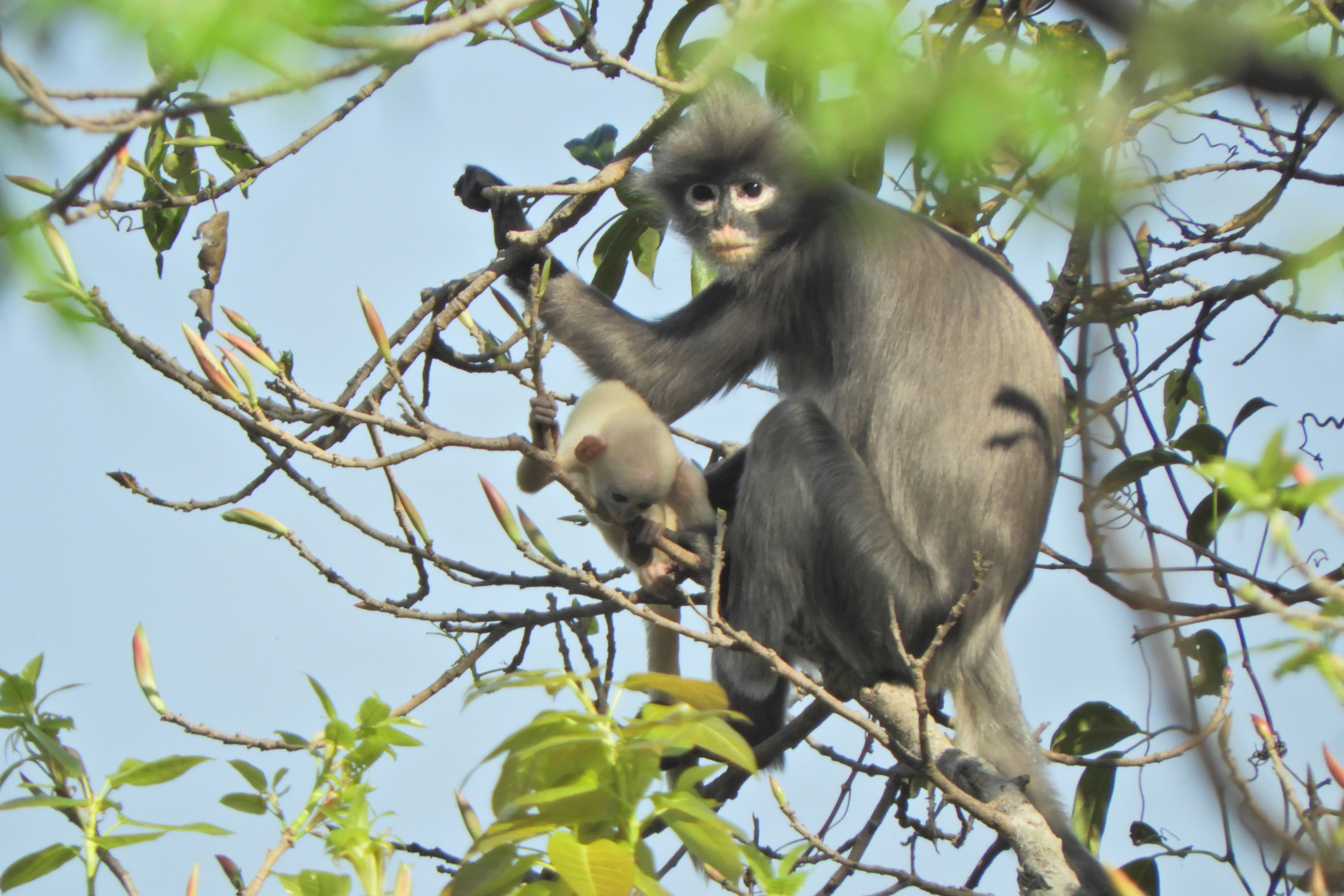New species of critically endangered monkey with spectacle-like eye patches discovered
Tree-dwelling primate found living in extinct volcano in Myanmar

Your support helps us to tell the story
From reproductive rights to climate change to Big Tech, The Independent is on the ground when the story is developing. Whether it's investigating the financials of Elon Musk's pro-Trump PAC or producing our latest documentary, 'The A Word', which shines a light on the American women fighting for reproductive rights, we know how important it is to parse out the facts from the messaging.
At such a critical moment in US history, we need reporters on the ground. Your donation allows us to keep sending journalists to speak to both sides of the story.
The Independent is trusted by Americans across the entire political spectrum. And unlike many other quality news outlets, we choose not to lock Americans out of our reporting and analysis with paywalls. We believe quality journalism should be available to everyone, paid for by those who can afford it.
Your support makes all the difference.A new species of monkey with spectacle-like eye patches living in an extinct volcano in Myanmar has been discovered.
The tree-dwelling primate, named Popa langur, has been described as critically endangered after scientists said they believed there to be as few as 200 of the primate living in four isolated populations.
Popa langur differs from known species in its fur coloration — notably the greyish-coloured fur and mask-like face with unruly grey hair and markings around the eyes — as well as its tail length and skull measurements.
Working in collaboration with conservation NGO Fauna & Flora International, the German Primate Centre (DPZ) and Leibniz Institute for Primate Research in Göttingen, researchers undertook extensive genetic studies and field surveys, including analysis of a 100-year old specimen kept in London’s Natural History Museum.
Roberto Portela Miguez, senior curator in charge of mammals at the museum, who was involved in describing the new species, said: “Monkeys are one of the most iconic groups of mammals, and these specimens have been in the collections for over a hundred years, but we didn't have the tools or the expertise to do this work before.
“It is thanks to this collaboration with multiple international colleagues and latest sequencing techniques that we manage to bring this species to light.
“We hope that the naming of the species will help in its conservation. By giving this species the scientific status and notoriety it merits, there will be even more concerted efforts in protecting this area and the few other remaining populations.”
The Popa langur is only found in central Myanmar and is named after Mount Popa, which holds the largest population of the species with about 100 animals. Mount Popa is an extinct volcano and is home a wildlife sanctuary as well as a pilgrimage site.
"Just described, the Popa langur is already facing extinction," said Frank Momberg, from Fauna & Flora International. Hunting and habitat loss are considered the main threats facing the animal.
Ngwe Lwin, a primatologist with FFI's Myanmar programme, said additional field surveys and protection measures were “urgently required ... to save the langurs from extinction”.
The DNA for genetic analyses was obtained from fecal samples collected in the wild as well as from tissue samples of specimens held in natural history museums in London, Leiden, New York and Singapore.
Scientists have long wondered whether there was an unnamed species living in Mynamar after studying Phayre's langur, a monkey living across south and east Asia.
The thinking was that at least two subspecies — meaning the differences between the animals were not sufficient to be designated a new species — existed.
But after conducting studies of their skins and skulls, researchers found a third population of the monkeys that were different enough to be considered a third species, and were named after the mountain they were living on.
“It could be difficult for anybody in the field to be able to tell this is a different species from the others,” said Mr Portela Miguez. “There are small differences, so you need to know what to look for.
“If you have access to museum specimens, one is the larger size of molars and the skull is a bit more elongated in the Popa langur. There are also some physical differences in the skins, but the colouration is quite variable within and across these species.
“But generally you can see that the blackness in the lower arms of the Popa langur seems to extend slightly above the elbow, while in the other species it seems to be limited to below the elbows. The white muzzle is also wider in Popa and their eye are always fully encircled with broad white eye-rings.”
Details of their findings were revealed in a study published by the journal, Zoological Research.

Join our commenting forum
Join thought-provoking conversations, follow other Independent readers and see their replies
Comments